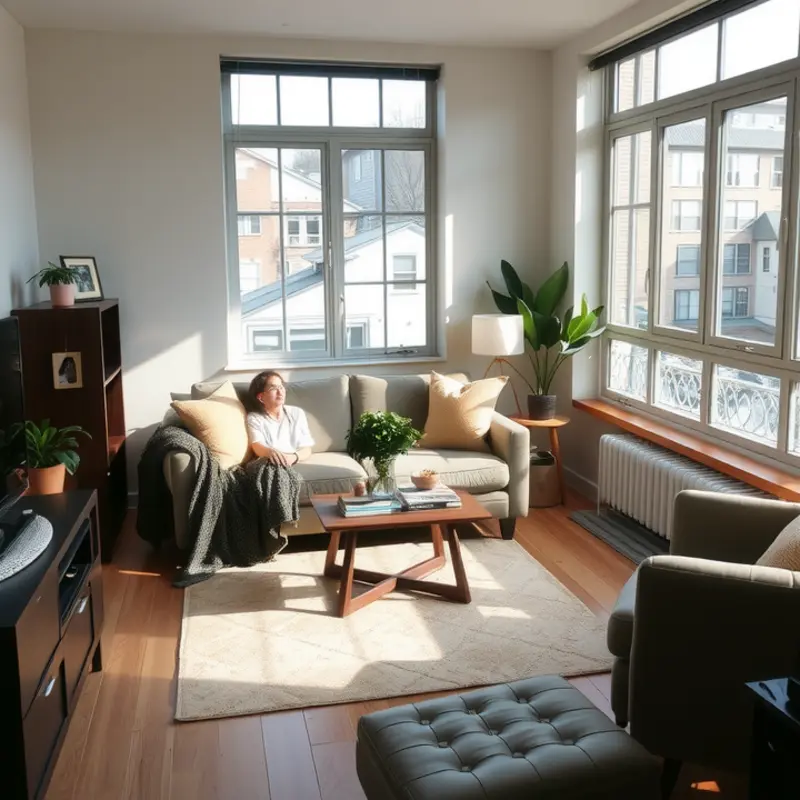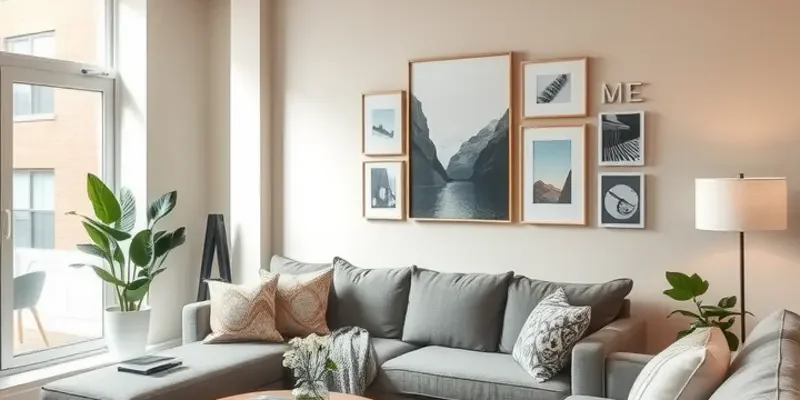Finding the right place to live is a rite of passage for many young adults, first-time renters, and busy professionals. From cozy studios in the heart of the city to spacious family homes in the suburbs, the choices can be overwhelming. Two popular options floating around in the apartment rental universe are traditional renting and co-living arrangements. While renting implies securing your hose with a fixed lease, co-living adds a twist by fostering a community-centric vibe—think of it as renting with a side of friendship and social activities. As you embark on this home-hunting journey, consider the benefits, drawbacks, and what suits your lifestyle best. Are you ready to take your living situation to the next level? Grab a cup of coffee (or tea if that’s your vibe), and let’s break down the differences between renting and co-living. You might just find the arrangement that fits your lifestyle like your favorite pair of sneakers!
The Traditional Rent: Your Space, Your Rules

When you choose traditional renting, you unlock a world of personal freedom and privacy. It’s your own little oasis where you call the shots. Whether it’s decorating the space to reflect your taste or opting for complete silence after a long day, traditional renting allows for unmatched control.
One of the primary perks is privacy. Unlike co-living arrangements, where you share communal areas, renting your own place ensures that your living space is exclusively yours. You can entertain guests or enjoy solitude without interruptions, which is a major plus for many.
Financial Considerations
Renting often provides financial clarity. You typically have a fixed monthly rent to manage, allowing for consistent budgeting without sudden surprises. In contrast, some co-living spaces may have fluctuating costs depending on services and utilities inclusivity.
Moreover, renting can also offer long-term stability. Lease agreements often span six to twelve months or more, offering you continuity in where you lay your head each night. It’s a great opportunity to embed yourself in a community and make a place truly feel like home.
Your Space, Your Rules, Your Responsibility
While the autonomy renting offers is empowering, it comes with its set of responsibilities. Maintaining the property is mostly on you, from handling minor repairs to ensuring everything stays in working order. The apartment air purifier guide can be an excellent resource to help maintain indoor air quality, protecting your privacy and health without relying on anyone else.
Securing your personal paradise also means managing utility bills and adhering to lease agreements. Late fees or contract breaches can strain finances and renting history. A grasp of your lease terms is crucial—avoiding lease loopholes can prevent costly issues down the road.
Then there’s the personalization aspect. From crafting DIY candle holders to setting up customized decor, your rented apartment becomes a canvas for your creativity. Being able to hang pictures where you like or paint an accent wall can make a significant difference in feeling truly the master of your domain.
Ultimately, diving into the realm of traditional renting is about balancing autonomy and responsibility. While you get the joy of living on your own terms, the upkeep requires effort and attention. Consider the trade-offs carefully to ensure that this traditional living choice serves your lifestyle and goals best.
Co-Living: The Modern Community Twist

Co-living is an innovative housing concept that is reshaping our notion of modern living spaces. It combines private quarters with shared communal areas, offering a dynamic mix of autonomy and interaction. Think of it as a harmonious blend of dormitory-style living for adults. The model often includes private bedrooms but shared spaces like kitchens, lounges, and sometimes even bathrooms.
The allure of co-living largely hinges on its ability to foster community connections. In a time where meaningful relationships can seem elusive, co-living setups are intentional about creating interactions. Residents might share meals, participate in organized activities, or simply enjoy spontaneous exchanges over morning coffee. For social butterflies, this environment can be a perfect match. It reduces loneliness and can introduce you to friends from various walks of life.
For the budget-conscious, co-living is also financially appealing. Rent is often more affordable than traditional options, thanks to shared utilities and amenities. Furthermore, many co-living spaces are fully furnished and include amenities like cleaning services, internet, and even gym access. This bundling of costs can simplify budgeting and eliminate the hassle of managing multiple bills.
However, like any living arrangement, co-living has potential downsides. Sharing your space with many housemates can sometimes feel like too close quarters. The noise level and lack of privacy may become challenges, particularly if you prefer quiet or solitude. It’s crucial to evaluate your tolerance for shared spaces and find a community that matches your lifestyle preferences.
Flexibility is another intriguing perk. Many co-living arrangements offer the ease of month-to-month leases. This is ideal if you’re new to a city or considering a short-term stay without the high costs of a hotel or the commitment of a year-long lease. On the flip side, frequent changeovers can mean adjusting to a revolving door of housemates, which not everyone may enjoy.
Co-living also provides opportunities for learning and growth through cultural exchanges, exposure to diverse perspectives, and even skill-sharing workshops organized by the community. This can be especially enriching for young professionals or expatriates desiring a tighter community feel. For those contemplating this lifestyle, consider the level of interaction you desire and your adaptability to a shared environment.
If you’re curious about organizing your own smaller living spaces to suit a communal lifestyle, you might explore tips on apartment organization using baskets. Such resources can offer practical insights into making shared living arrangements more efficient and comfortable, enhancing your overall co-living experience.
Ultimately, co-living offers a modern twist on communal living that aligns with the needs of today’s diverse urban populace. Whether you’re looking to connect with others, save money, or enjoy flexibility, co-living might just be the ideal setup for you.
Final words
Choosing between renting and co-living ultimately comes down to your personal preferences and lifestyle needs. If you crave independence, privacy, and the chance to put your unique stamp on a home, traditional renting may be for you. On the other hand, if you thrive on social interactions, flexibility, and community, co-living might just be what you need to find a home away from home. Regardless of your choice, understanding the ins and outs of each option equips you with the knowledge to make the best decision for your situation. So, choose wisely, and may your next home be filled with joy and comfort—preferably without roommates stealing your snacks.









